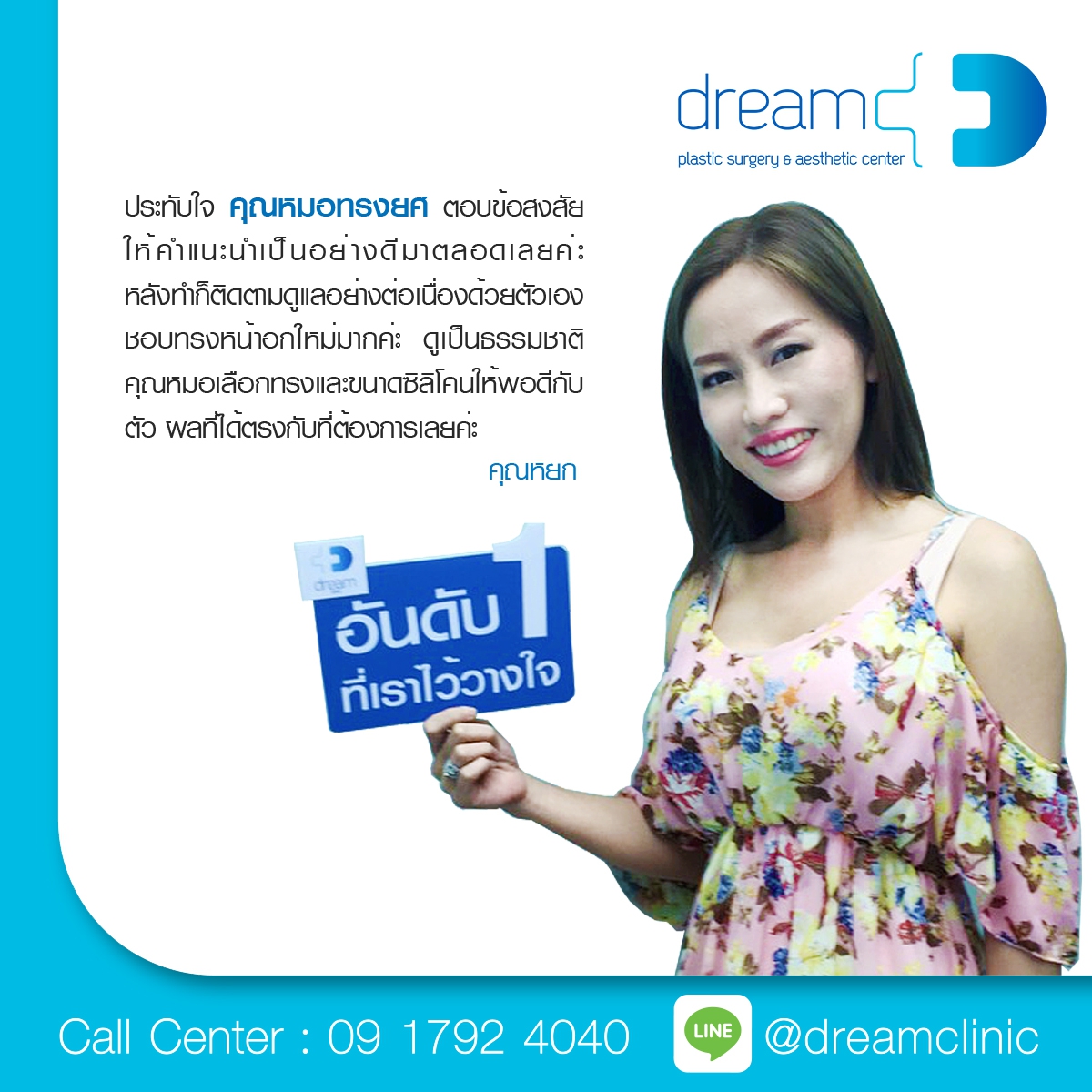Promotion Breast Augmentation
Breast augmentation surgery increases or restores breast size using silicone gel implants, saline implants or in some cases, fat transfer. One of the most popular and frequently performed aesthetic surgery procedures, breast augmentation has a long and successful track record in satisfying women who wish to enhance, regain or restore balance to their figures.
When to Consider Breast Augmentation
- If you want a better proportioned or more appealing figure
- If you wish your clothes fit better
- When pregnancy, weight loss or aging has affected the size and shape of your breasts
- To restore symmetry if one of your breasts is smaller than the other
Pros
- Augmentation is a long-term solution for achieving an ideal figure.
- You will look better in clothes and swimwear.
- You will have a more youthful-looking figure.
Cons
- Breast implants require monitoring.
- Implants will eventually need to be replaced.
- Normal surgical risks are involved.
These are the three top pros and cons to weigh when considering breast augmentation. If you wish to focus on what is unique to you, please consult with our plastic surgeon.
Are you a good candidate for breast augmentation?
The following are some common reasons why you may want to consider breast augmentation:
- You believe your breasts are too small for your body.
- You feel self-conscious wearing a swimsuit or form-fitting or low-cut tops.
- Clothes that fit your hips are too large at the bust line.
- Your breasts have become smaller or less firm after you’ve had children.
- Your breasts have become smaller due to weight loss.
- One of your breasts is noticeably smaller than the other.
If you are in good health, have a positive attitude and realistic expectations, you are most likely a good candidate for this procedure.

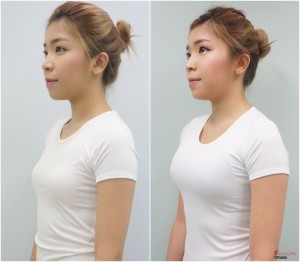 |
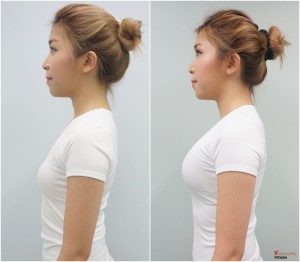 |
Testimonial

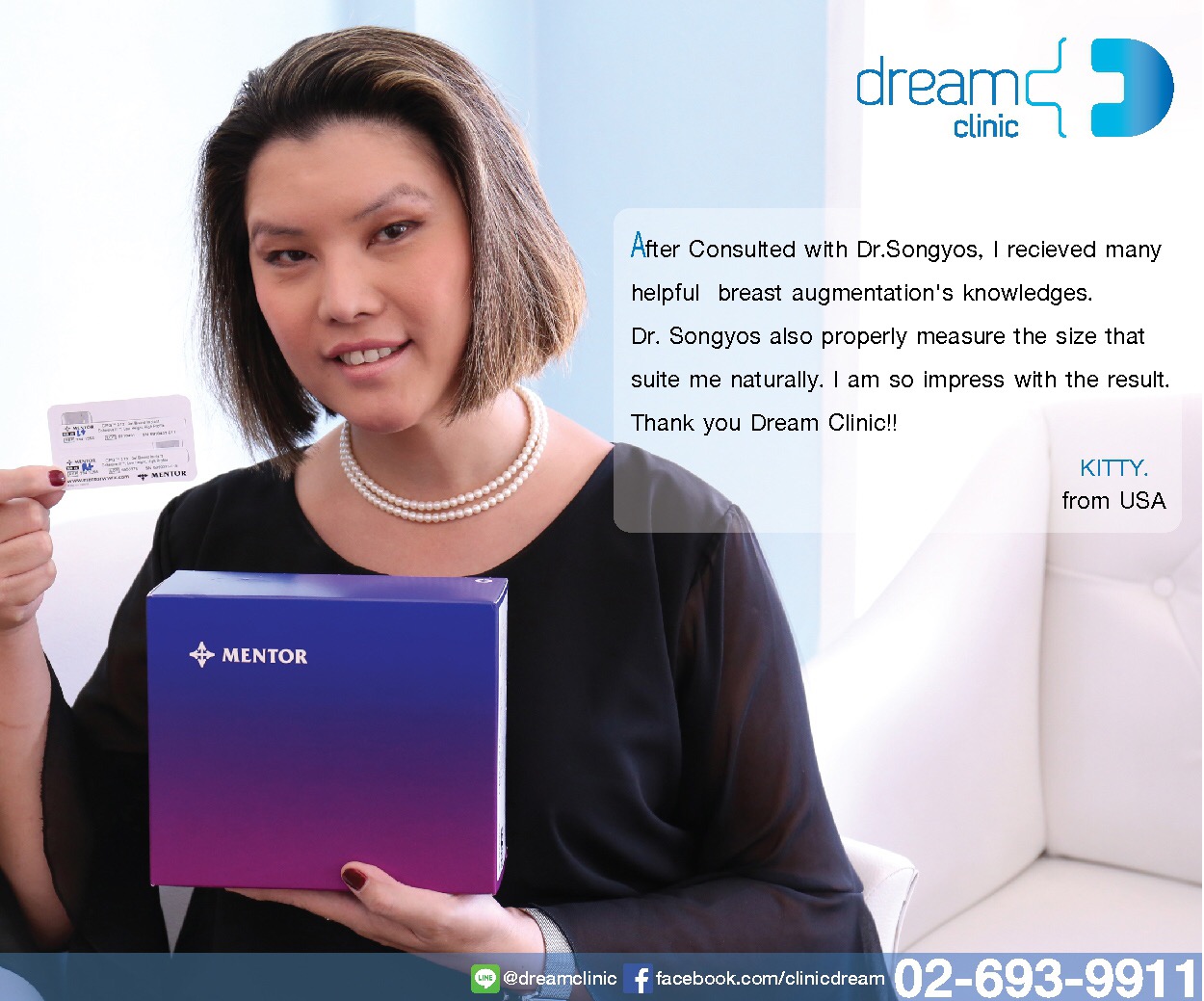
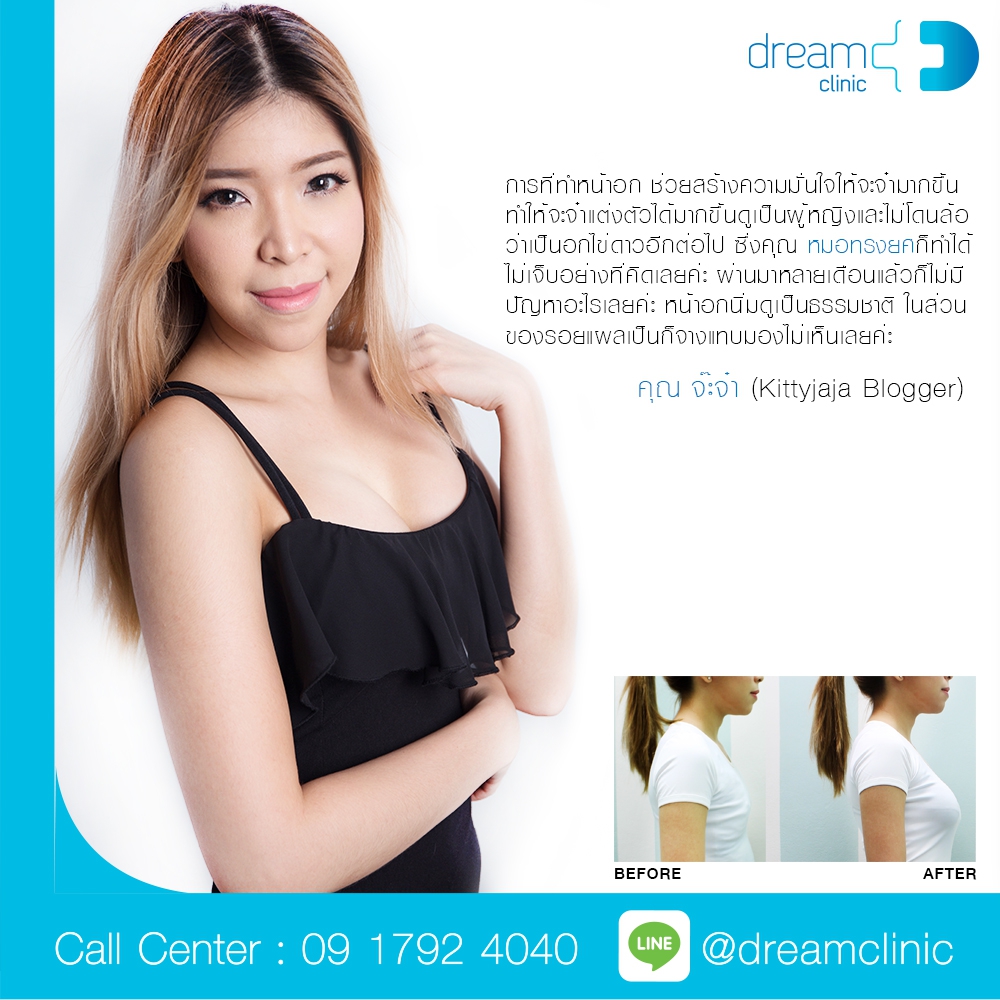
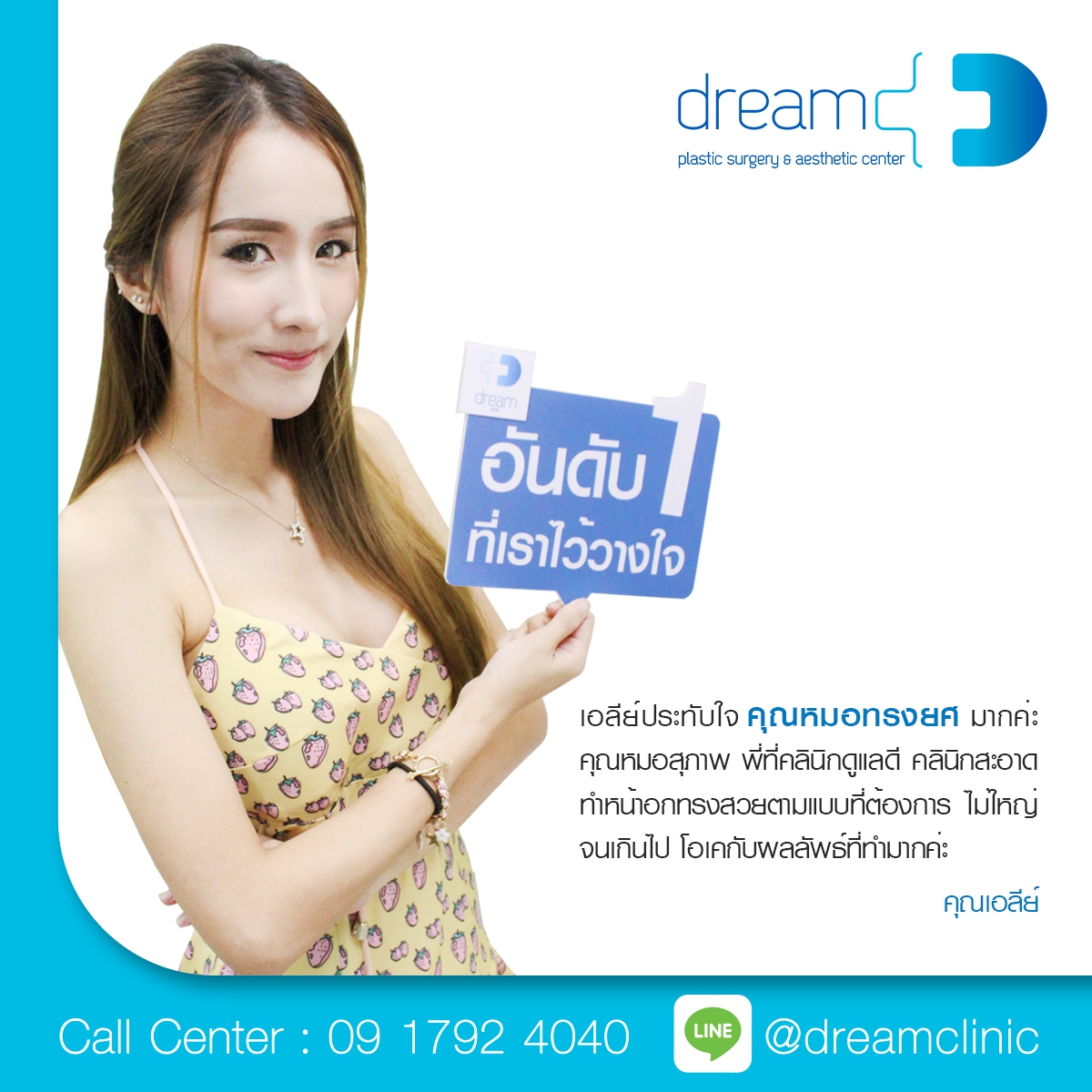

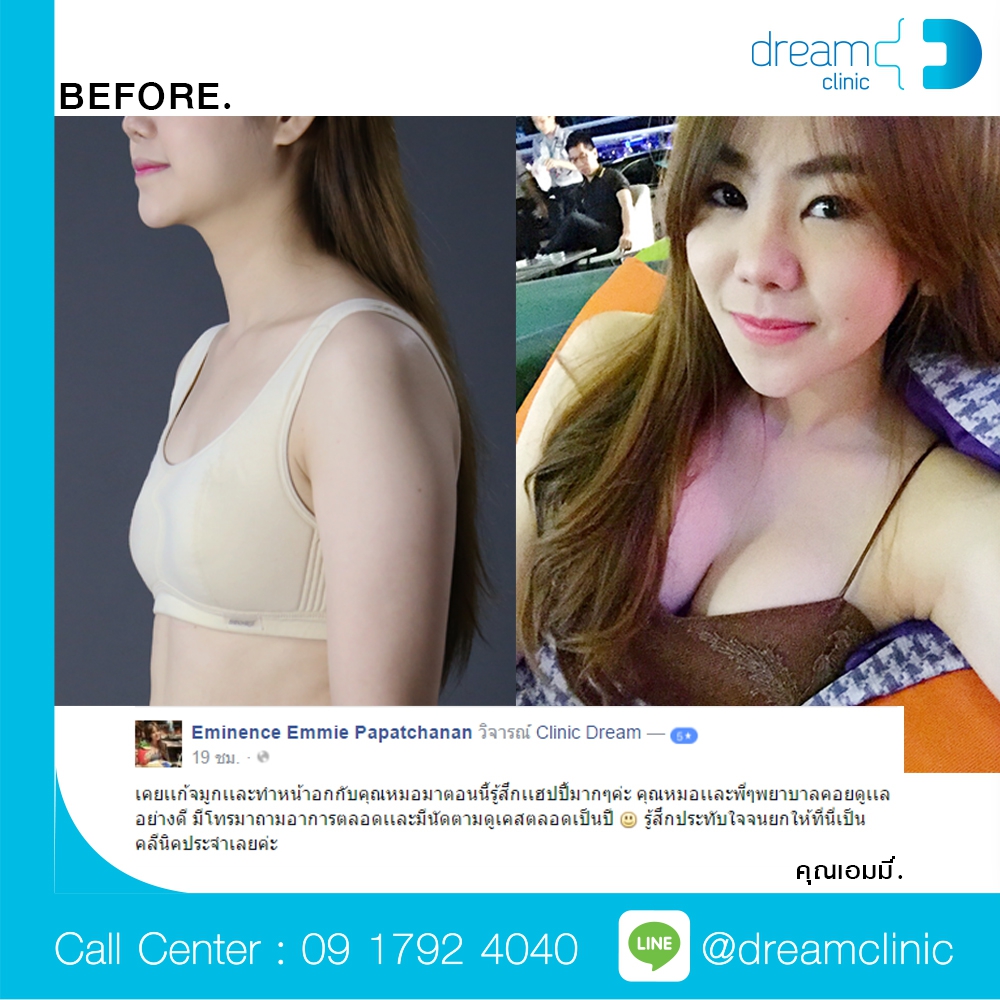

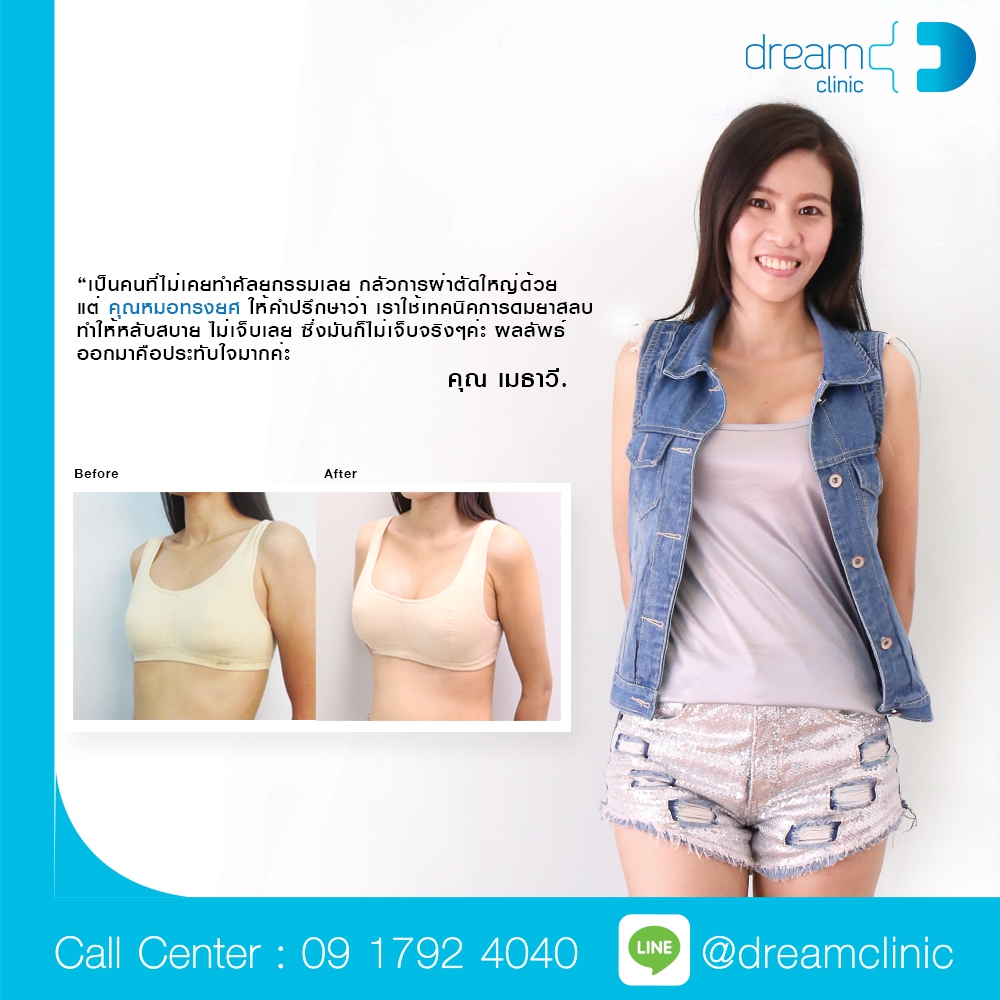

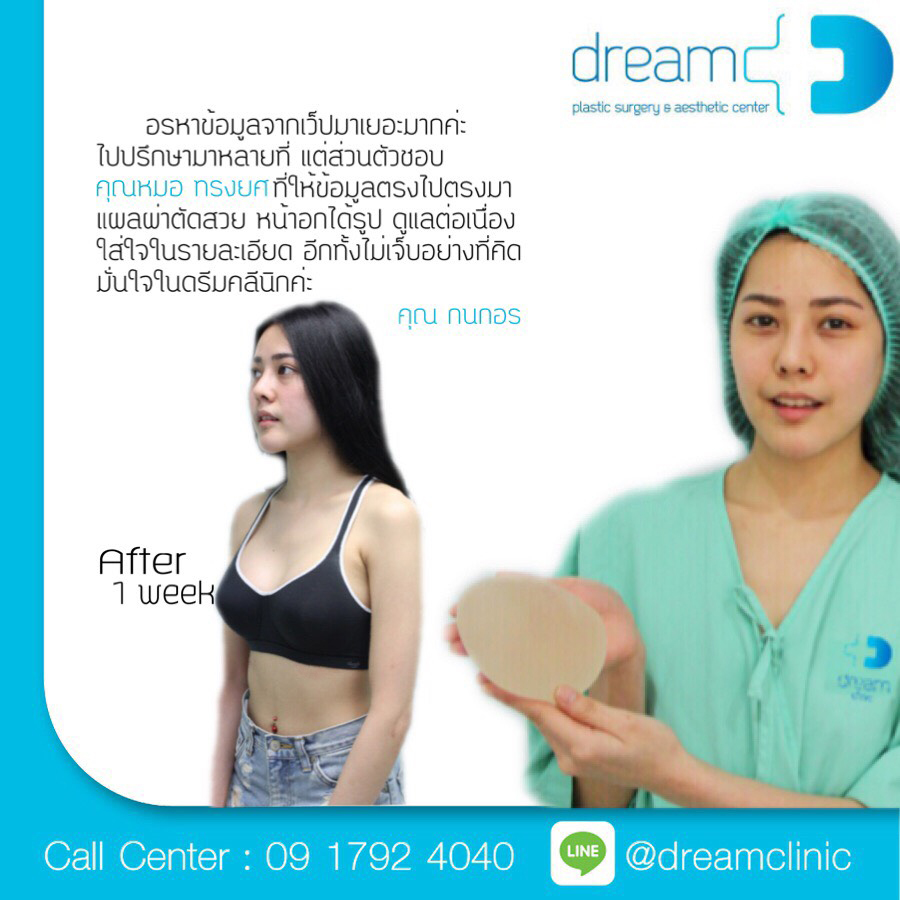
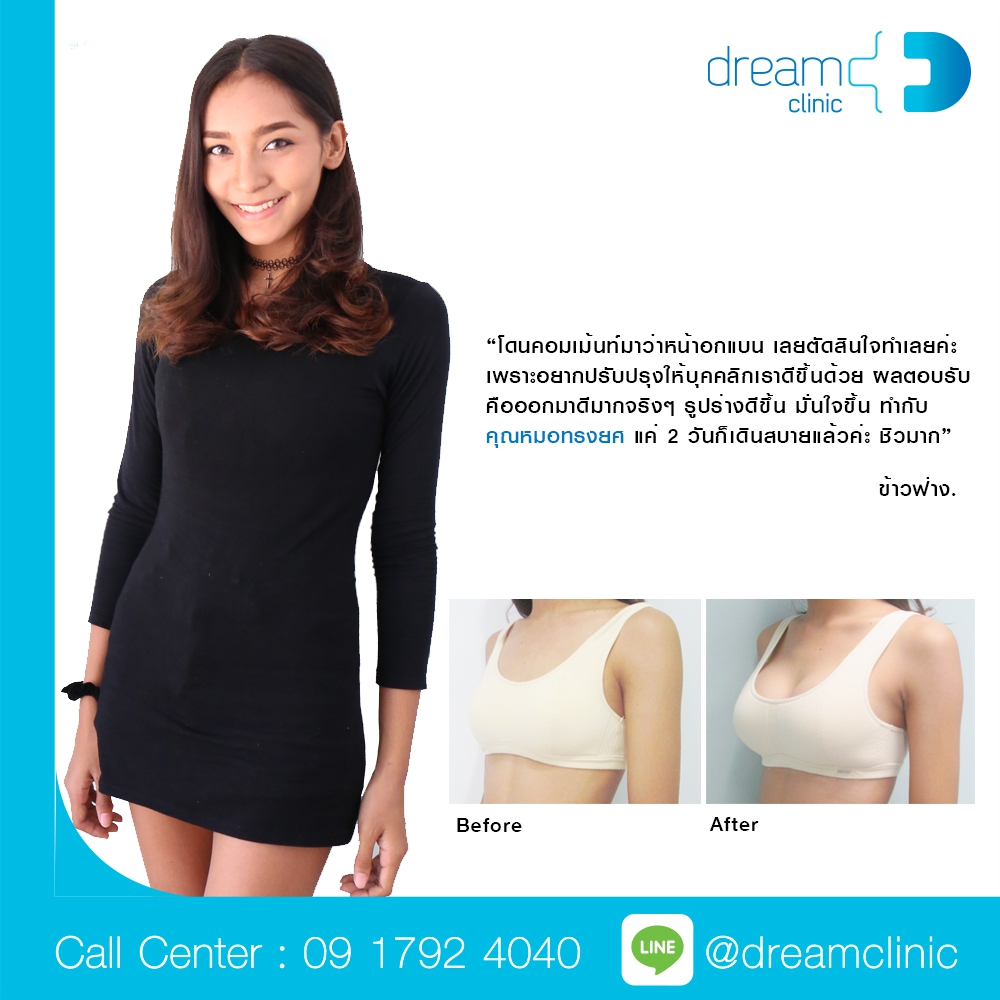

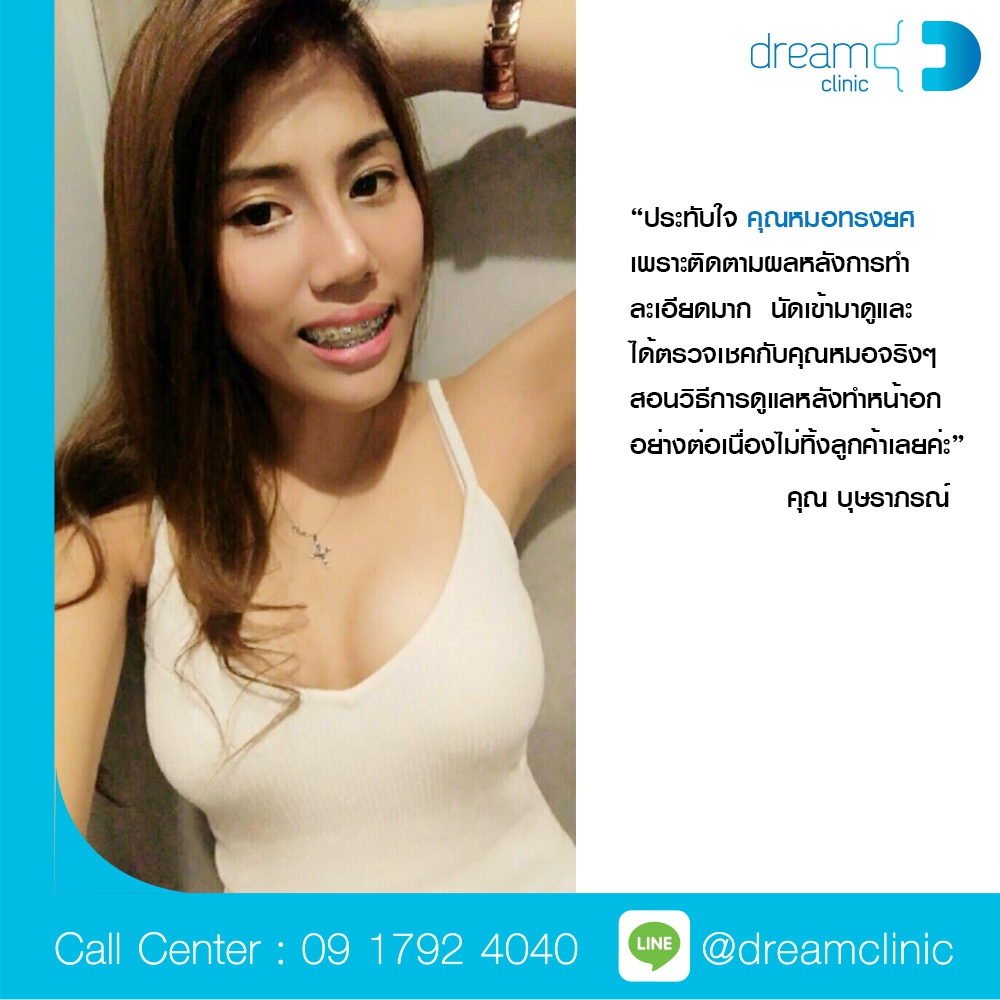
Highlights of Breast Augmentation Surgery at Dream clinic
1.Qualified surgeon, Certified Board of Plastic Surgery
Our surgeon is a highly experienced, well recognized and certified by Society of Plastic and Reconstructive Surgeons of Thailand, The Society of Aesthetic Plastic Sugeons of Thailand (THSAP) , along with the International Society of Aesthetic Plastic Surgery ( ISAPS).
Our surgeon, Dr. Songyos has completed the advance training course at the international cosmetic surgery, Korea. You can rest assure that you will be in good hands.

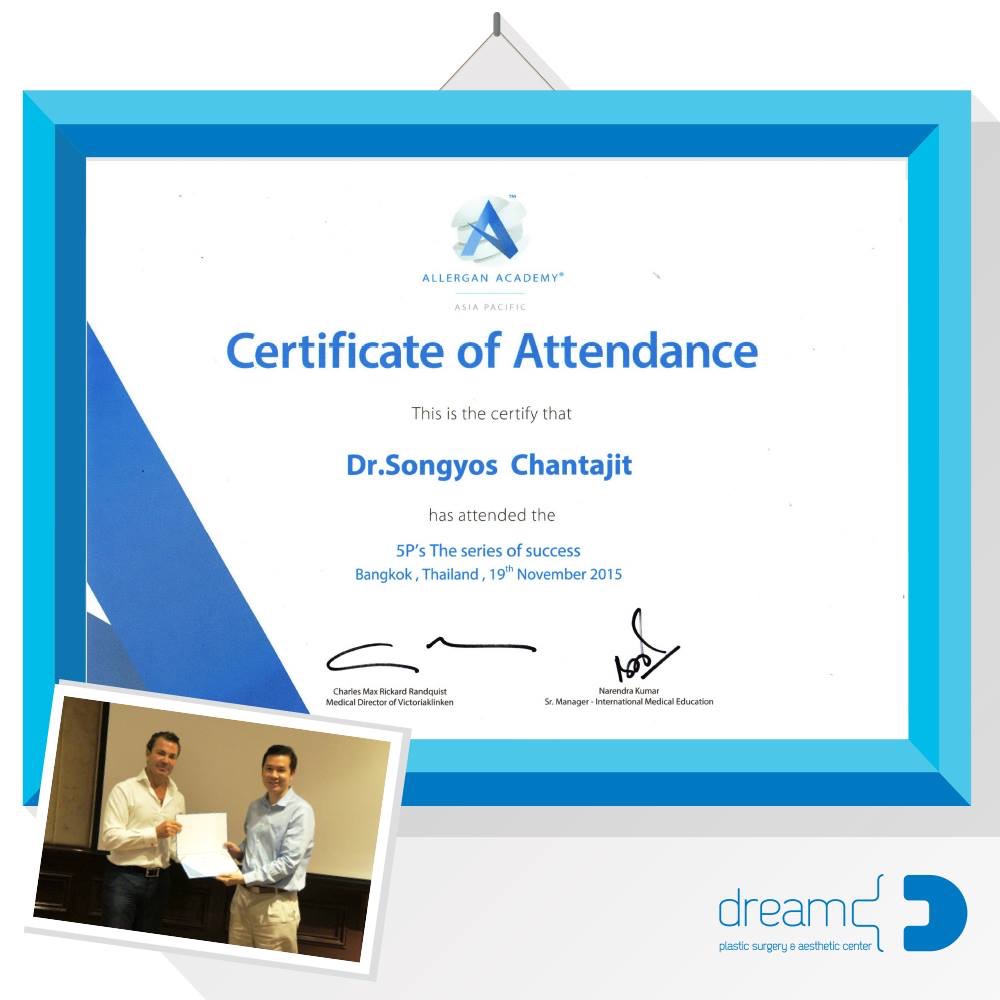
Members of the Society of Plastic and Reconstructive Surgeons of Thailand are experienced and qualified to perform your aesthetic procedure. You can check the name of our plastic surgeon on the website of the Society of Aesthetic Plastic Surgeons of Thailand
www.surgery.or.th/en/surgeon.php
2.FDA Approved Silicone Implants
Dream Clinic uses silicone implants certified by the Food and Drug Administration of Thailand and the United States of America. These silicone are safe to use, does not cause allergies, gangrene, infection or leaking. Each piece of silicone has serial numbers from the manufacturer as guarantee.

3.Systematic measurement to fit your breasts with the best silicone implants ; Body Logic System
The doctor uses a measurement system which is widely used of top surgeons in USA to evaluate the perfect silicone shape and size for you. He will measure the width, length and height of your breasts and chest thoroughly by millimeters. Then use it to calculate the size that will perfectly fit you. Dream clinic recommends you to consult our doctor first before surgery so that you can fit the trial silicone to ensure the perfect size of silicone that fits your body.
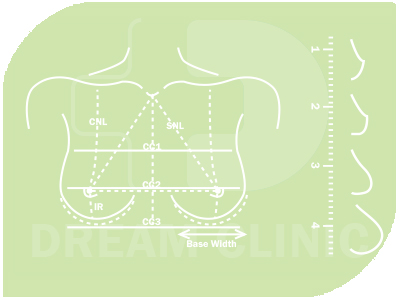
4.Sterile Equipments and Operating Room
Clean Operating Room. Adopting the same standards and operating systems used in the hospital’s surgery room.

5.Short recovery time, minimal pain, and less swelling
Dream clinic uses specialized equipment and technique of surgery which makes recovery time shorten to 1-2 days
6.Optimal wound care and follow up
You will be continuously monitored by the doctor and his medical team. You will be taught skin care for the wound. Appointments are made for monitoring of the tissue, silicone implants and scars so that you will get the best treatment.

Detailed Procedural Info
How is a breast augmentation procedure performed?
In breast augmentation using implants, your surgeon makes an incision, lifts the breast tissue, creates a pocket in the chest/breast area and places an implant in the pocket.
An additional option for breast augmentation is autologous fat transfer, a process in which your surgeon removes your own fat, using liposuction, from a fat-yielding body part (such as your abdomen, thighs, or flanks) processes it and then injects it into your breasts.
Where will my breast implants be placed?
Multiple factors, including your anatomy and your surgeon’s recommendations, will determine how your breast implant is inserted and positioned. The implant is placed in a pocket either:
- Underneath the pectoral muscle, which is located between the breast tissue and chest wall.
- Underneath the breast tissue and on top of the pectoral muscle.
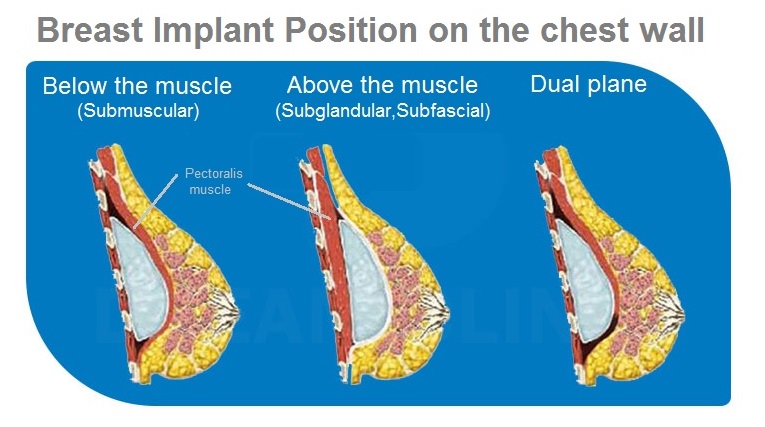 Breast implants are placed either above or below the pectoralis muscle.
Breast implants are placed either above or below the pectoralis muscle.
Placement of the implant underneath the pectoralis muscle may interfere less with mammograms and breast-feeding. Your plastic surgeon will discuss this with you.
What are my options?
There have never been more choices for breast augmentation. The following options are available, depending on your medical history, body shape and aesthetic goals.
Cohesive gel silicone implants, also known as “gummy bear” or “form stable” implants, are filled with a cohesive gel, made of crosslinked molecules of silicone, which makes them a bit thicker and firmer than traditional silicone implants. This enables them to hold their shape better. Approved by the FDA for use in the United States in 2012, these implants have been available in much of the world since 1992.
Autologous fat transfer removes fat through liposuction from an area of your body in which there are abundant fat cells, such as your thighs, abdomen and hips. After a process of preparation and refinement, the fat cells are injected into your breast.
Plastic surgeon might combine any of these breast augmentation options with a breast lift if there is any sagging or drooping of your breasts.
Your anatomy and health profile as well as your personal preferences will help you and your surgeon determine:
- The best type of surgery for you
- Your optimal breast size
- The type of implant and incision location that will best fill your needs.
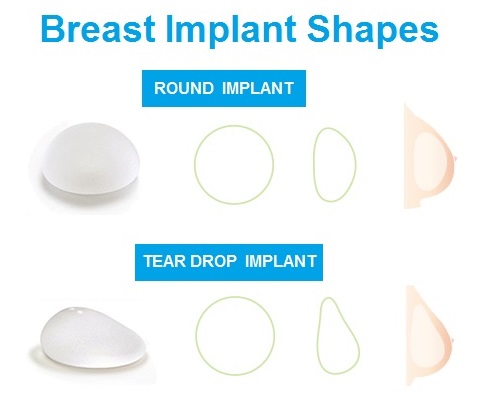 Factors that influence the size and type of breast augmentation recommended for you include:
Factors that influence the size and type of breast augmentation recommended for you include:
- Your medical history
- Your goals for breast enhancement
- Your existing body frame and mass
- Your existing breast tissue
- Your preferences related to size and incision placement.
The goal of your aesthetic plastic surgeon and staff is to help you achieve the best results and to make your surgical experience as easy, safe and comfortable as possible.
What will my breast augmentation incisions and scars be like?
An incision can be made in one of four places:
- Inframammary: Underneath the breast, just above the crease
- Transaxillary: Near the armpit, where the arm meets the chest area
- Periareolar: Around the lower edge of the areola (the dark area surrounding the nipple)
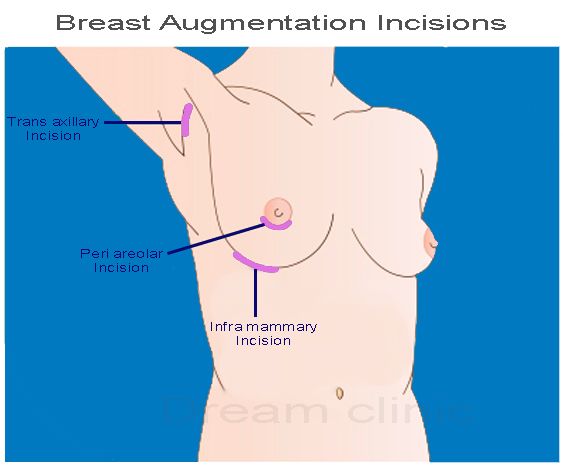
Is breast augmentation safe?
It is important for women with breast implants to keep in mind that while breast implants are intended to last your lifetime, replacement may become necessary. After breast implant surgery, you should have periodic examination by a board-certified plastic surgeon to monitor your implants.
Silicone gel−filled breast implants have been under scrutiny for years, but after gathering detailed and meticulous research and data, the FDA has approved them for use in cosmetic breast enhancement surgery, finding no link between silicone gel breast implants and connective tissue disease, breast cancer or reproductive problems. In addition, the US- FDA has approved three companies to develop and market breast implants and continue to collect data on their long-term safety and efficacy. For more information, please see the FDA breast implant information provided on their site.
Surgical techniques for breast augmentation and all breast implants are continually being refined, increasing the safety and reliability of the procedure. Ask your plastic surgeon to provide you with the information you need to make an informed decision.
Selecting a Surgeon
Select a surgeon you can trust
It’s important to choose your surgeon based on:
- Education, training and certification
- Experience with breast augmentation surgery
- Your comfort level with him
Members of the Society of Plastic and Reconstructive Surgeons of Thailand are experienced and qualified to perform your aesthetic procedure. You can check the name of the plastic surgeons on the website of the Society of Aesthetic Plastic Surgeons of Thailand
www.surgery.or.th/en/surgeon.php
After finding a board-certified plastic surgeon in your area who is experienced in performing breast augmentation, you will need to make an appointment for your consultation. Generally, because of the in-depth nature of the consultation, there is a cost associated with the initial visit.
Your initial consultation appointment
During your initial consultation, you will have the opportunity to discuss your cosmetic goals. Your surgeon will evaluate you as a candidate for breast augmentation and clarify what a breast augmentation can do for you. Understanding your goals and medical condition, both alternative and additional treatments may be considered .
You should come to the consultation prepared to discuss your complete medical history. This will include information about:
- Previous surgeries
- Past and present medical conditions
- Allergies and current medications
- Medical treatments you have received
- Medications you currently take
- Family history of breast cancer
- Current mammogram results
Your plastic surgeon will examine, measure and photograph your breasts for your medical record. Your surgeon will consider:
- The current size and shape of your breasts.
- The breast size and shape that you desire.
- The quality and quantity of your breast tissue.
- The quality of your skin.
- The placement of your nipples and areolas.
If your breasts are sagging, a breast lift may be recommended in conjunction with breast augmentation.
If you are planning to lose a significant amount of weight, be sure to tell your plastic surgeon. The surgeon may recommend that you stabilize your weight before undergoing surgery.
If you think that you may want to become pregnant in the future, discuss this with your surgeon. Pregnancy can alter breast size in an unpredictable way and could affect the long-term results of your breast augmentation. There is no evidence that breast implants will affect pregnancy or your ability to breast-feed, but if you have questions about these matters, you should ask your plastic surgeon.
Your treatment plan
Based on your goals, physical characteristics, and the surgeon’s training and experience, your surgeon will share recommendations and information with you, including:
- An approach to your surgery, including the type of procedure or combination of procedures.
- The outcomes that you can anticipate.
- Your financial investment for the procedure.
- Associated risks and complications.
- Options for anesthesia and surgery location.
- What is needed to prepare for the surgery.
- What you can expect to experience after surgery.
- Show before-and-after photos of cases that are similar to yours and answer any questions; 3D imaging may be used to help choose an appropriate implant for you.
Questions to ask your aesthetic plastic surgeon
For a general list of questions to ask your surgeon about his or her background, to find out about plastic surgery safety and to plan your procedure, visit the Planning Toolkit.
We developed these questions to help you:
- Make the most informed and intelligent decisions about your procedure.
- Confirm that you have the right surgeon for your procedure.
- Make your initial consultation as rewarding and productive as possible.
- Understand your options, potential outcomes and risks.
It is important for you to take an active role in your surgery, so please use this list of questions as a starting point for your initial consultation:
- Am I a good candidate for breast enhancement or enlargement?
- Are the results I am seeking reasonable and realistic?
- Do you have before-and-after photos I can look at for the procedure I am undergoing?
- Will you be combining a breast lift with the breast augmentation?
- In my case, will the breast implants be placed beneath the breast tissue or beneath the pectoral muscle?
- Will my scars be visible? Where will my scars be located?
- What type of implants do you recommend for me?
- What kind of anesthesia do you recommend for me?
- What will be the costs associated with my surgery?
- What will you expect of me to get the best results?
- What kind of recovery period can I expect and when can I resume normal activities?
- How many additional implant-related operations can I expect over my lifetime?
- How can I expect my implanted breasts to look over time? After pregnancy? After breast-feeding?
- What are the risks and complications associated with my procedure?
- How are complications handled?
- What are my options if the cosmetic outcome of my breast augmentation does not meet the goals we agreed on?
- How will my breasts look if I choose to have the implants removed in the future and not have them replaced?
Preparing for Your Procedure
How do I prepare for a breast augmentation procedure?
Your surgeon will provide thorough preoperative instructions, answer any questions you may have, take a detailed medical history and perform a physical exam to determine your fitness for surgery.
To help detect and track any changes in your breast tissue, your plastic surgeon may recommend:
- A baseline mammogram before surgery
- Another mammogram a few months after surgery
In advance of your procedure, your surgeon will ask you to:
- Stop smoking at least six weeks before undergoing surgery to better promote healing.
- Avoid taking aspirin and certain anti-inflammatory drugs that can increase bleeding.
- Regardless of the type of surgery to be performed, hydration is very important before and after surgery for safe recovery.
For breast augmentation using autologous fat transfer, you may be instructed to wear a special bra to expand the skin and tissue around the breasts to prepare them for fat injection.
Breast augmentation is usually performed on an outpatient basis. Be sure to arrange for someone to drive you home after surgery and to stay with you at least the first night following surgery.
What can I expect on the day of breast augmentation surgery?
Your breast augmentation surgery may be performed in an accredited hospital, free-standing ambulatory facility or office-based surgical suite. Most breast augmentation procedures take at least one to three hours.
- Medications are administered for your comfort during the surgical procedure.
- General anesthesia is commonly used during your breast augmentation procedure, although local anesthesia or intravenous sedation may be desirable in some instances.
- For your safety during the surgery, various monitors will be used to check your heart, blood pressure, pulse and the amount of oxygen circulating in your blood.
- Your surgeon will follow the surgical plan discussed with you before surgery.
- After your procedure is completed, you will be taken into a recovery area, where you will continue to be closely monitored.
Breast implants
Following insertion and placement of breast implants, your surgeon will use sutures to close the surgical incisions. Many plastic surgeons will wrap your chest area with a gauze bandage or a surgical compression bra to provide support and assist with healing. Occasionally, drainage tubes may be used for a short time following surgery.
Fat transfer
Breast augmentation with autologous fat transfer requires two procedures: liposuction and fat injection. Using liposuction techniques, your plastic surgeon will remove your fat cells from a predetermined location with a cannula, process the fat and then inject the fat into your breasts. Your liposuction incisions will be closed with sutures, and you will wear compression garments over the liposuction areas and your breasts.
You may be permitted to go home after a short observation period unless you and your plastic surgeon have arranged other plans for your immediate postoperative recovery.
Aftercare and Recovery
Your surgeon will discuss how long it will be before you can return to your normal level of activity and work. After surgery, you and your caregiver will receive detailed instructions about your postsurgical care, including information about:
- Drains, if they have been placed
- Normal symptoms you will experience
- Potential signs of complication
See options for short-term recovery locations in Aftercare and Recovery (Planning Toolkit).
Immediately after breast augmentation surgery
After your breast augmentation procedure, you may be placed in a surgical dressing that can include a support bra or garment.
Breast augmentation surgery stretches the breast tissue and can be painful—especially when implants have been placed under the chest muscle. Typically, the most pain is experienced within the first 48 hours after breast augmentation surgery. Your level of pain will typically decrease each day and may be effectively treated with various pain medications.
Your breasts may feel tight and sensitive to the touch and your skin may feel warm or itchy. You may experience difficulty raising your arms.
Some discoloration and swelling will occur initially, but this will disappear quickly. Most residual swelling will resolve within a month.
When the anesthesia wears off, you may have some pain. If the pain is extreme or long-lasting, contact your physician. You will also have some redness and swelling after the surgery. Contact your surgeon to find out if your pain, redness and swelling is normal or a sign of a problem.
Recovery time frame after breast augmentation
You should be able to walk without assistance immediately after breast augmentation surgery. It is very important that you walk a few minutes every few hours to reduce the risk of blood clot formation in your legs.
It is vitally important that you follow all patient care instructions provided by your surgeon. This will include information about wearing compression garments, care of your drains, taking an antibiotic if prescribed and the level and type of activity that is safe. Your surgeon will also provide detailed instructions about the normal symptoms you will experience and any potential signs of complications. It is important to realize that the amount of time it takes for recovery varies greatly among individuals.
The first week
- For two to five days, you may feel stiff and sore in your chest region.
- Any surgical dressings will be removed within several days. You may be instructed to wear a support bra.
- You will be permitted to shower between one and seven days after surgery.
- If you have external sutures, they will be removed in about a week. If your surgeon used tissue glue or tape, it will fall off on its own in a week or two.
- You may be able to return to work within a few days to a week, depending on the nature of your job.
- You should refrain from lifting, pulling or pushing anything that causes pain and limit strenuous activity or upper body twisting if this causes discomfort.
Two to six weeks
You should minimize excessive physical activity for at least the first couple of weeks after surgery. After that, take care to be extremely gentle with your breasts for at least the next month. Intimate contact will be guided by your comfort.
Long-term
Your surgeon will encourage you to schedule routine mammograms at the frequency recommended for your age group. Following breast augmentation, you should continue to perform breast self-examination.
How Long Will the Results Last?
Under normal circumstances, the results of your breast augmentation surgery will be long-lasting; however, it’s important to know that breast implants need to be replaced if they leak. Routine follow-up with your surgeon is important.
Fat transfer surgery has different expectations, including losing some volume over time.
Your breasts can change due to:
- Childbirth
- Aging
- Weight gain or loss
- Hormonal factors
- Gravity
After a number of years, if you become less satisfied with the appearance of your breasts, you may choose to undergo a breast revision to exchange your implants, or a breast lift to restore a more youthful shape and contour.
Maintain a relationship with your aesthetic plastic surgeon
For safety, as well as the most beautiful and healthy outcome, it’s important to return to your plastic surgeon’s office for follow-up evaluation at prescribed times and whenever you notice any changes in your breasts. Do not hesitate to contact your surgeon when you have any questions or concerns.
Associated Costs
The cost of breast augmentation varies from doctor to doctor, from one geographic area to another, and based on the specific augmentation procedure.
See the national average for physician fees per procedure.
These numbers only reflect the physician/surgeon fees last year and do not include fees for the surgical facility, anesthesia, medical tests, prescriptions, surgical garments or other miscellaneous costs related to breast revision.
Because breast augmentation is elective surgery, insurance does not cover these costs. Many surgeons offer financing plans to make the procedure more affordable.
Choose your surgeon based on quality, training and experience — not cost.
See why ASAPS members are widely recognized for upholding the highest standards in the area of aesthetic plastic surgery by viewing their basic credentials, training and certifications.
Limitations and Risks
Fortunately, significant complications from breast augmentation are infrequent. Your specific risks for breast augmentation will be discussed during your consultation.
All surgical procedures have some degree of risk. Some of the potential complications of all surgeries are:
- Adverse reaction to anesthesia
- Hematoma or seroma (an accumulation of blood or fluid under the skin that may require removal)
- Infection and bleeding
- Changes in sensation
- Scarring
- Allergic reactions
- Damage to underlying structures
- Unsatisfactory results that may necessitate additional procedures
All surgical procedures have some degree of risk. With breast augmentation, minor complications occur occasionally, but do not affect the outcome. Major breast augmentation complications are very unusual.
Other risks specific to breast augmentation are outlined below:
- Infection
- Capsular contracture
- Implant rupture
- Mammography shadows affecting breast cancer detection.
Breast Cancer Detection
If you are of an age in which you get regular mammographic examinations, it will be important for you to select a radiology technician who is experienced in taking x-rays of augmented breasts. Additional views of your breasts are often required.
Your aesthetic plastic surgeon, in some instances, may recommend other types of examinations, such as ultrasound or magnetic resonance imaging (MRI). It is possible that the presence of breast implants could delay or hinder the early detection of breast cancer.
You can help minimize certain risks by following the advice and instructions of your board-certified plastic surgeon, both before and after your breast augmentation surgery.

